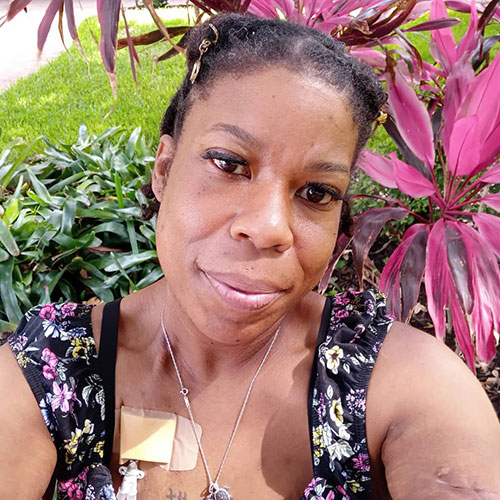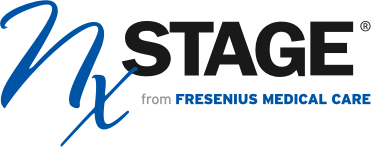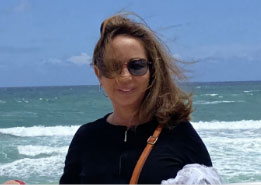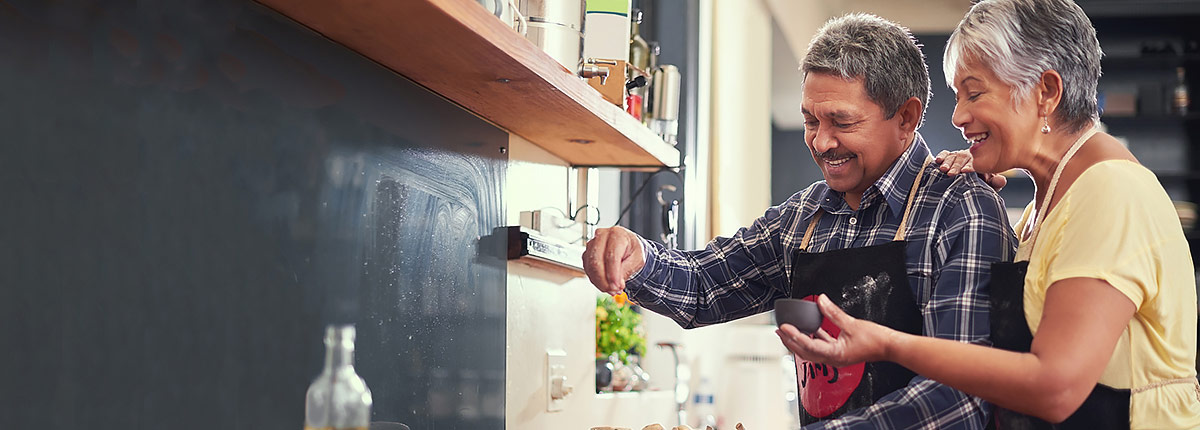Transcript
Vanessa
Hi everyone and welcome to Visits with Vanessa, a podcast where we speak with home hemodialysis patients and care partners about their experiences doing home dialysis. Today’s episode will focus on utilizing Nx2me Connected Health to improve your experience with home while you’re on HHD. This is a topic I know all too well, I’m actually a dialysis patient myself. I’ve been on dialysis for over 24 years, I’m also the senior manager of advocacy and communications for Fresenius Medical Care. When I first started home I had to use paper flow sheets and those can be difficult, daunting, time-consuming, you name the adjective that is what it is. It is hard to do, so when Nx2me Connected Health was introduced and I was able to start to move away from those paper flow sheets and start to be able to do it through this connected health technology it was really a game changer for me and I think for a lot of people. I’m excited today to speak with a friend of mine, Maaya. Maaya is a patient advocate, a paid advocate from NxStage, but she like me had to go from those paper flowsheets to this new technology. Excited to welcome Maaya. Maaya please do introduce yourself.
Maaya
Hi Vanessa, thanks for having me. Well, like you said, my name is Maaya. I was diagnosed with kidney failure in 2014, so it’s been a while since I’ve been doing this. I could say that I’m a joyful person, a happy person. I’m glad that I’m home. I’m able to communicate with people and have fun, and that’s what I love to do.
Vanessa
Well, we are so happy to have you here today. Let’s talk a little bit about your story before we get into the connected health piece. I know that you started dialysis in about 2014, that’s when your kidney function unfortunately started to decline. Tell me a little bit about your journey into dialysis and did you start at home? Did you start in-center? What did that look like?
Maaya
Well I started like I said started in 2014, I went to a center first. I really didn’t know anything about dialysis and what that really pertains to. I really wasn’t, I was really depressed and sad to go because, you know it, you know, that’s a life changing event. So, I was in a center from three to four years before I made a decision to go home.
Vanessa
And what prompted that decision to go home?
Maaya
I was just tired of being in a center, I felt that all I did was sleep, eat, in-center, and repeat, and I really wanted my life back. I wanted to be able to socialize with my family and have the energy to socialize with my family.
Vanessa
Oh my God, I totally get it.
Maaya
Yeah, so you know I was like OK, I gotta make a change and all they talked about was either, you know you’re doing dialysis or you do a transplant. So I really had to search another way to go home.
Vanessa
And so tell me a little bit about that. So then you transitioned home and what was it like for you at first when you transitioned home?
Maaya
I was excited. I was really excited. I was happy to be home, my family and my support team was very very happy and happy to be home because it happened right before the pandemic. It was like go through training and oh yeah, pandemic, you’re not going anywhere, so I was really happy that I made decision at the right time at the right moment to go home, so I was really excited.
Vanessa
Yeah, you really had good timing with that. It’s so much you know nicer to be in the comfort of your own home, especially when you have to perform dialysis during this uncertain times for sure. So Maaya, we know as dialysis patients, you know part of the process of doing dialysis are these lovely little sheets called flowsheets, right, treatment sheets, and after you do a dialysis treatment if you’re in-center, your staff is doing it for you, but when you go home, you know you learn to do everything yourself. So, when you first went home, did you, how did you record your treatments? What was the way that you were initially taught?
Maaya
I was taught with the flow sheets first, but I was let known that there was going to be the Nx2me and I was like, OK ipads? I was like, OK, this technology is coming in and I was really excited because I don’t like filling out paperwork and that’s the worst thing about flowsheets you got it’s like repeatedly making sure you put the correct information in.
Vanessa
Right, so let’s tell the listeners a little bit about that. So usually, right us patients if we didn’t have the Nx2me Connected Health, we would be filling out paper flowsheets where we would be recording all of our vitals, you know all the information that we get when we do a treatment. What time we start, what time we get off, what medicine we’re giving ourselves, kind of all that important information. With the Nx2me Connected Health it’s really cool because it’s actually an app that is on an iPad, it’s Bluetooth function right, and it tracks all of your treatment data so you’re not trying to track all that treatment data for you. And the best thing about it is that that treatment data goes directly to your care team. So there’s other information that you the patient fills in because it’s going to change from treatment to treatment but it’s minimal effort compared to a flowsheet. I always like to tell the story of when I was doing the flowsheets of paper I was probably a solid D student. I didn’t really do too well at it, I was very bad at you know, filling in the data and even worse at submitting it because I would forget it when I would have to go in for my monthly visits, or even worse, if I forget it, then I would have to either try to fax it over, talk about old school right, or I was scanning it over and it never seemed to be enough time in the day and then when I went from those paper flowsheets to the Nx2me Connected Health I think I went from, you know a D- student to a solid B+, A student, right? At least, because now everything is basically put in for me and then I’m putting in all my other information and it’s as easy as literally a click of a button to submit your flowsheets. Maaya, how is your experience? How did that change for you, tell me a little bit about what it’s like to use that Nx2me Connected platform.
Maaya
Oh I love it. I love having my information right at my fingertips. I’m able to make a notation and my nurse will have it the minute you know the minute she gets to work the next day. Or if she’s still at work she’ll check it, so if there’s a problem or she sees a problem’s going to happen, she could call me, OK we need to switch this we need to do this. It’s one of the best tools I can have with being home because if I need to look up my pressures or anything, I can always have that at my I don’t have to go ask my nurse or my doctors, hey I need a can you give me a recording of past you know history so I could just look and see what I’m doing wrong or what I’m doing right, it’s already there.
Vanessa
Yeah, you’re bringing up such a good point. Like you know you are able to in the Nx2me Connected Health, you can go and you can look at all of your past treatments. It’s pretty awesome to be able to do that, particularly when you’re trying to track kind of your venous and your arterial pressures and see you know if anything is high or too low, do you need to go in for a fistula gram, like any of those things that really does help you be able to track that, and it really it gives your nurse care team the insight that they can look at it and see what’s going on. Maaya it reminds me of a story that you and I talked about earlier actually, you were telling me about a particular situation when Nx2me was really helpful and you were actually able to use some of the new technology that was recently added. Do you want to share a little bit about that? It was, I think it’s about your compromised Sak.
Maaya
Yes, yes. So one day my Sak was compromised and I’ve never had an alarm like that, so I was able to call tech support from, you know using my app, and show them what I’m seeing so they could see what I’m seeing cause sometimes you can explain it, but they might not understand you. So, with the app you could be like OK here, turn the camera on, face it at the at the problem be like OK this is what’s going on how do I fix it? And they can tell you a little bit better than you just tell you know you telling them, and they tell you, so if they can if they can see it, they can be like oh so that’s what you’re doing wrong. Like you know if I didn’t clamp it right, or in the right position, or I’m clamping the wrong tube he could see that and be like OK, no, no, no you need to clamp the other tube, not that tube.
Vanessa
There is nothing better than a visual, and sometimes you know when you’re on the machine you’re kind of stressed and things are going on, and sometimes we just forget to do like the most obvious thing like clamping or unclamping something or just looking to see like what is it that I need to proactively go and fix. So to be able to use that camera function where you’re sharing your space and you can actually show them the machine and any of the errors and they can visually take a look at it and say guess what Maaya you need to unclamp you know the blue line or whatever and you might think OK that’s right wasn’t you know wasn’t really thinking that way, totally didn’t think ,and so that is a great that is a great way to be able to share your space and have somebody on the line that can help you walk through it and then you were telling me about you know what your nurse said the next day.
Maaya
Yes, because I had left notes, she was like you did a good job. You know I saw that you had you know a bag problem. She was like I’m glad that you wrote it in the notes so I can know what’s going on. And she also helped me get a new a new Sak cause I didn’t know that you can order, you know, get a replacement so she helped me with it and I was like that was so helpful because if I wouldn’t had told her she wouldn’t had told me how to fix the problems, so I’m glad that we have the notes that we can go in and make a notation about anything that’s going on that you know you want the nurse to know so you can make a really good decision on what to do.
Vanessa
It’s yeah, it’s 100% helpful, it reminds me actually one time you know you go in and there are questions that you answer in the connected health that have to do, you know with your health. Did you use bags? Did you have an infiltration and I one night by mistake hit yes that I had an infiltration, totally by mistake, did not have an infiltration. But what was interesting is the next morning my nurse gave me a call and said Vanessa, I’m just calling in to check in, is everything OK? And I’m like yeah, everything is fine, why what’s up? And she said no, because I noticed on your Nx2me that you infiltrated last night and I wanted to make sure that your access was OK. And I said, oh my God, no everything is fine, I think I might have hit the wrong button, but what I really liked about it is that I know that my care team has, you know, a visual to that, and they’re able to see you know what is everything OK with her access. Just like with you, they were able to know, wow, she had a machine issue was able to call tech support and walked it through. So you are alone, but you’re not alone. You actually have a whole care team that just helping you kind of walk through this ’cause it can be a little overwhelming. So I’m wondering about that, Maaya, when you transitioned into using the Nx2me Connected Health platform, was there a lot of training? Did you feel overwhelmed cause sometimes we can you know we can feel a little overwhelmed with the technology, it might be a little too much. What are your thoughts?
Maaya
Well, I thought it was easy. I was excited. Training was only maybe a 30-minute training, and it was very simple. It was mostly, you know you it pretty much ran itself, all you’re doing is putting in your numbers, and that’s easy. I mean, being able to view something is one of the best tools that I have for being home, so I love it.
Vanessa
Yeah, you’re right, it really is a good tool. But there are people out there that might get overwhelmed with the technology or they might think it’s just a little too much oversight and you know they’re kind of apprehensive about using a Nx2me type of a product. What would you say to those people that just you know, might think it’s too much oversight? What are your thoughts?
Maaya
Well, it’s your health, so I’d rather have a lot of oversight over your health.
Vanessa
I think it does help you do the right thing and I think one of the things that I’ve noticed that it’s helped me and I would have never even thought of this is really helping me be more accountable. I do look at the screen to see how long my treatments have been, did I actually do you know my full prescription and see that 100%? You know all across the board? Honestly makes me feel good in a weird way that I would have never I would have never thought that I would maybe taken a look at that and felt good about it.
Maaya
I did it just remind me of stickers like you know when you got that sticker on your on your report card, on your progress report and you, that’s just a reminder that 100% is just a reminder that you did a good thing.
Vanessa
Yeah, you did well, you did, go ahead sorry Maaya.
Maaya
Yeah, it’s just like a positive reinforcement, so I see that hundred, I’m like yes, I did it.
Vanessa
Everybody loves positive reinforcement, right? And this is a way that you can you know, obtain that positive reinforcement but also help your care team make sure that you’re doing things well and step in when they need to, which I think is so important and that that technology of sharing your screen and sharing what’s going on with your machine I think as a new patient I would love that, I just think that that would really give me a sense of security and safety.
Maaya
Yes, it does, it really does. I love being able to have that communication with my team because we can see it together. I’m not, they’re not just looking at it and I’m just not looking at it, we’re looking at it together.
Vanessa
I love that Maaya, I love what you’re saying, you know sometimes I myself will put in some notes, I dialyze at night you know, and nothing is an emergency but if there are questions and stuff, I can put it in the notes and the nurse can then go ahead and take a look at that and call me the next day, which is, you know, really good cause you might not always remember what’s going on, you know it when you’re in the middle of it, but then the next morning, particularly when it’s not an emergency, it’s nice to have kind of those reminders in the notes. Another piece about the Nx2me, just kind of as we close out, you know it is a Bluetooth platform and it is on an iPad. So as you go on your travels you can take it with you wherever you go up, which is really helpful when people are on the road, traveling, visiting friends and family, you’re able to do that and we encourage you to work with your health care team to tell you how to do that and kind of walk through any of those steps that you might you know you might want to learn a little bit more about.
So today we discussed a little bit about Maaya and her journey. We discussed the difference between having a paper flowsheet and now use using the Nx2me Connected Health platform and really all the advantages that it really can give to a patient, can make dialysis simpler. Being able to do your treatments at home, really knowing that you’ve got this at your fingertips to write your notes and put in all your information for your treatments. Maaya, thank you so much for joining me today, having this discussion about Nx2me Connected Health, I appreciate it.
Maaya
Thanks for having me, Vanessa. This was a great talk.
Vanessa
So to our listeners, thank you so much for joining us today. If you have questions and you want to learn more about home hemodialysis or Nx2me Connected Health, please call one of our Patient Consultants. You can reach them at 1-888-200-6456 or you can head over to nxstage.com/patients/talk-to-a-patient-consultant website. What’s great is that our consultants are either current or former home dialysis patients and they can help get you that information that you need. It’s important to note that not all patients may experience these benefits.
With that Maaya thank you so much for joining us today. Really happy to have this discussion and look forward to our next episode of Visits with Vanessa. Bye for now.













